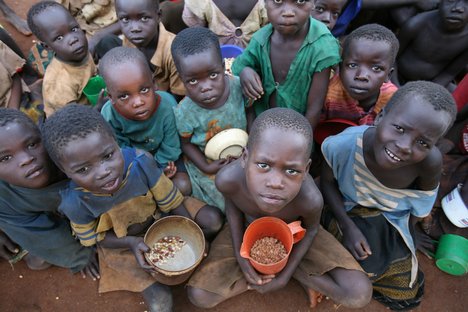A deteriorating food security situation in Uganda's northeastern region of Karamoja could affect an estimated 1.2 million people, according to reports from the government and aid agencies.
A June 2013 Integrated Food Security Phase Classification (IPC) analysis, carried out by food security partners and led by the Ministry of Agriculture, Animal Industry and Fisheries (MAAIF), revealed that up to 975,000 people in the semi-arid region face "stressed" levels of food insecurity, while 234,000 more cannot meet their minimum food needs.
An assessment carried out in May by the UN World Food Programme (WFP) and the University of Makerere showed a poor food and nutrition situation in five of the region's seven districts – Kotido, Kaabong, Moroto, Napak and Nakapiripirit.
"The food security situation in the rest of the districts appears to be poor, but not unusually so for this time of the year," said the report.
Already, Nakapiripirit is experiencing global acute malnutrition (GAM) rates of 14.9 percent, just shy of the emergency threshold of 15 percent.
According to the June 2013 food security outlook released by the Famine Early Warning Systems Network (FEWS NET), food securityoutcomes in Karamoja will remain unfavourable for the next two to three months.
Crop production down
"Erratic and poorly distributed rainfall in Karamoja to-date has impacted staple crop production. From March to mid-April, heavy rainfall resulted in water-logging and seedling damage in lowland areas, particularly in Kaabong, Kotido and Moroto districts. The remainder of April was characterized by erratic rains, followed by a long dry spell during much of May into June that resulted in atypical dry conditions and water stress, more severely in Kaabong district," said the FEWS NET report.
Michael Dunford, WFP deputy country director said: "At this stage, WFP would not suggest that people are actually starving, but certainly a significant proportion of the populations are suffering deteriorating food security. This has been highlighted by the poorer-than-usual food security and nutrition indicators."
He added, "Coupled with worse-than-usual harvest projections, we are naturally concerned of the short- and medium-term implications for the population in Karamoja. This [situation] will be very dependent upon the harvest and the rains over the coming months. The current prediction is that this year's harvest will be substantially down due to a lack and poorly timed rains."
Dunford said people had adopted "negative coping strategies, including reducing meals, skipping meals and increasing the levels of indebtedness" to deal with the situation.
"People are dying"
Local leaders told IRIN that some people had died as a result of hunger and malnutrition, and they decried inadequate supplies of food rations from the government.
"The situation is very bad in the region, especially in my district [Kaabong]. People are dying because of hunger. We have buried over 20 people in the last few weeks," Rose Lilly Akello, the member of parliament representing Kaabong, told IRIN.
"Although [the] government has delivered some 400 bags of food, this is not enough. My prayer is for the government and WFP to intervene by providing relief food for the next six to seven months. If they don't, the situation will worsen and more deaths will be recorded," she added.
Officials said the government will continue to mobilize resources to scale-up food distribution to Karamoja.
"The government is closely working with WFP to feed the population. We have dispatched food to the region. We shall continue to mobilize more food and resources to address the situation," said Musa Ecweru, the state minister for relief and disaster preparedness.
WFP, which ended blanket food distributions in Karamoja in 2009, says it needs US$7 million for its relief activities.
PS: This report does not necessarily reflect the views of the United Nations.
Source: allAfrica.com



